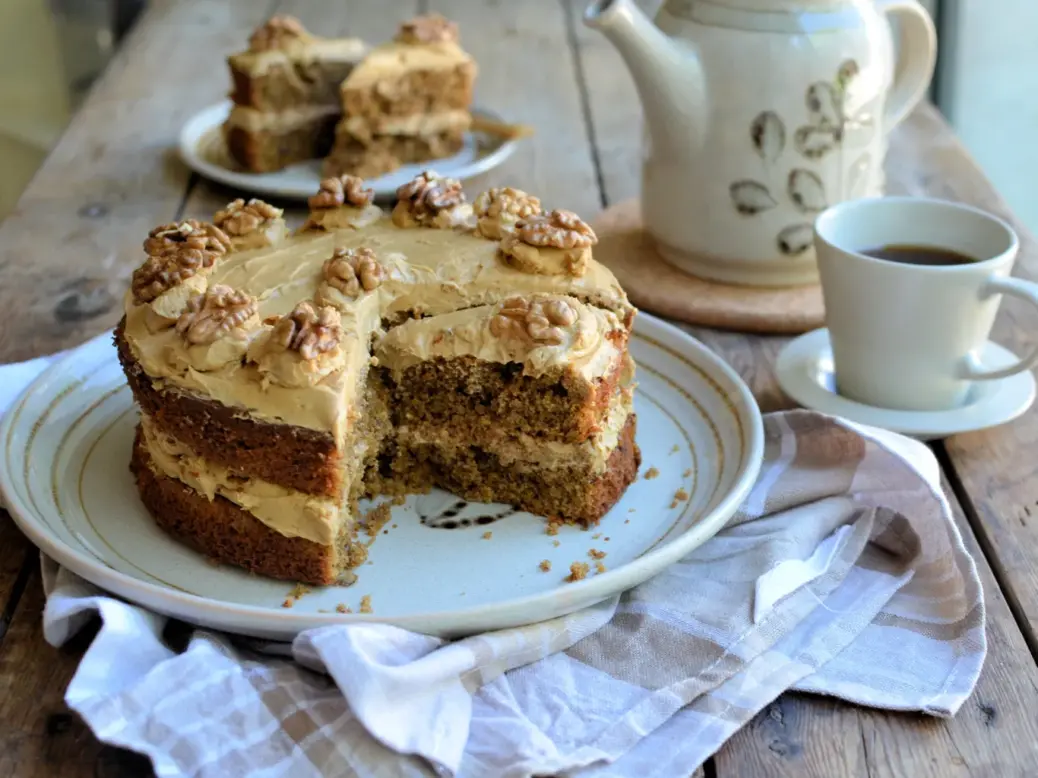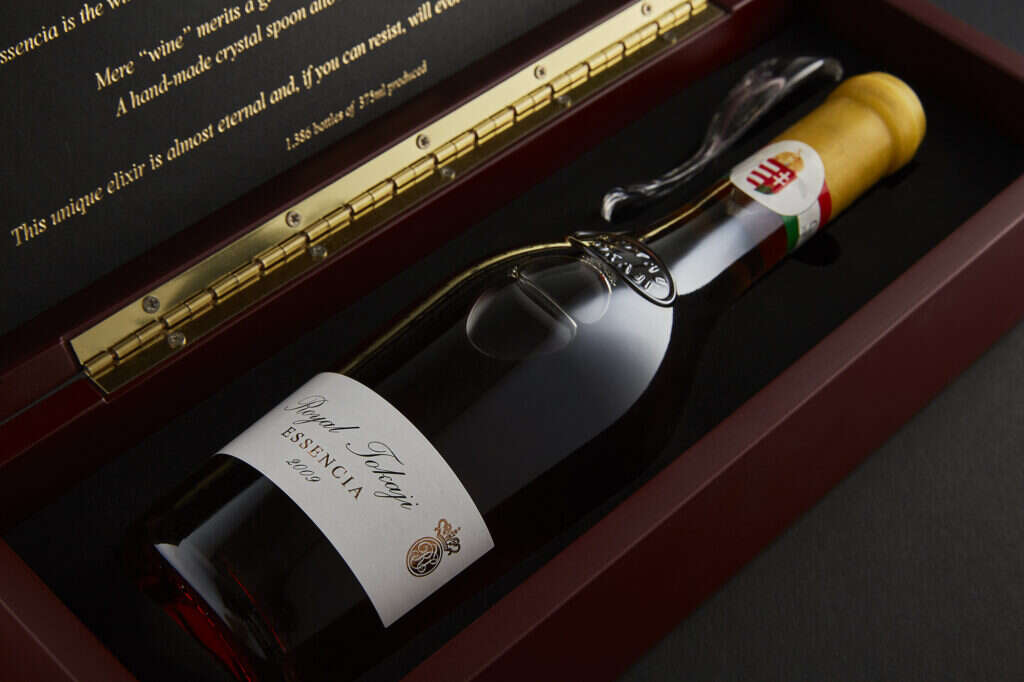
The World of Fine Wine has teamed up with Great British Chefs to find the best wine matches for a range of classic dishes. In this instalment, leading food and wine writer and WFW columnist, Joanna Simon, selects wines from the WFW tastings archive to pair with a favorite British tearoom cake.
After scrutinizing the Great British Chefs’ recipe, Joanna came up with two suggestions for matching the mellow flavors in lieu of tea or coffee: A Rutherglen Muscat like 919 Wines Classic Muscat South Australia from the Australian Fortifieds tasting in WFW62; and a Tokaji, such as Royal Tokaji Betsek Aszú 6 Puttonyos 2013, which was featured in the Royal Tokaji tasting in WFW58.
Below, you’ll find a brief introduction to the recipe by Karen Burns-Booth, as well as comprehensive tasting notes and introductions to the featured tastings.
Coffee and walnut cake
We are a nation of cake lovers … old family favorites are the ubiquitous Victoria sandwich, lemon drizzle cake, Madeira cake, chocolate cake and coffee and walnut cake, which is a personal favourite of mine. There’s something very “ye olde worlde tea room” about a lovely coffee and walnut cake, it beckons all cake and coffee lovers with its creamy good looks, and it’s the mainstay of the afternoon tea table.
I remember a wonderful old tearoom in Yorkshire, near to where I used to live—they always had a least four home-made cakes on offer, of which a grand coffee and walnut cake would be sitting amongst a fresh orange cake, chocolate cake and always a farmhouse fruit cake or Dundee cake. Although I was always tempted by the fresh orange cake, it was invariably a slice of coffee and walnut cake that made its way to my table with a pot of tea or cup of coffee!
Karen Burns-Booth for Great British Chefs

For more information and the full recipe, visit Great British Chefs
Australian fortifieds: Essences and elixirs
In WFW62, Andrew Jefford introduced a thrilling tasting sharedwith Alison Buchanan and Margaret Rand in which each tasterstruggled to find appropriate words to match their enthusiasmfor the “undervalued, underappreciated brilliance” of a range ofclassic fortifieds from Swan Valley and Rutherglen in Victoria and from across South Australia—wines where it seems magicis at work.
It was a simple stratagem: the addition of a bucket or two of strong distilled spirits to a barrel of wine. Anything that stopped wine turning to vinegar was invaluable in the days before cork-stopped glass bottles; the long ocean journey to market became less of a gamble. Imagine, though, the glee of those 18th-century pioneers as they discovered the benefits of fortifying part-fermented wines. Suddenly a rainbow of sweetness was possible; suddenly, too, wines could be inured against what customarily destroyed them: heat and air. Not only inured, but the forces of destruction could now be recruited as agents of concentration and refinement. Barrels and casks could linger in cellars for decades and emerge wondrously transformed into elixirs.
Elixirs, more or less, were what confronted this trio of tasters as we set about a selection of Australian fortified wines. This word implies a magical element, and when you read our notes, when you see us scrambling for analogies, and when you decode the sometimes wild, unhinged, and incredulous enthusiasm we felt for these wines, you may almost come to believe that magic is at work here. It isn’t, of course—so, what is?
The wine chosen from this tasting was:
919 Wines Classic Muscat South Australia
Alison Buchanan : Green-tinged, amber-mahogany, this presents the aromas of Christmas cake, slightly overdone, dried fruit and spice. The palate offers liquid mince pies, chocolate raisins, and caramelized orange zest—rather lovely. This is such a treacherous area in which to achieve balance, but it is beautifully done here, if still somewhat hedonistic. Mocha richness and dried fruit are complemented by a citric lift, finishing with elegant, poised aplomb. | 94
Royal Tokaji: The first golden decade
In WFW58, Peter Richards MW relished the earliest and latest releases of a producer that led the post-1990 revival of the great and historic Hungarian wine.
The moment critique in this historic tasting came late on, just before the final flight of new-release 2013s were poured. Zoltán Kovács, Royal Tokaji’s general manager in Mád, insisted we assembled tasters rinse our glasses assiduously, something we hadn’t done before previous flights. It had the feel of a symbolic act. “These new wines are very different,” he explained, simply. “I don’t want to have the reminiscence of the previous wines in the glass.”
Reminiscence, memory, history, tragedy, bounty—such are just some of the key themes in what is the dense, intricate, poignant narrative of Tokaj. It’s quite some story—one in which frequent conflict, invaders, and strife mingle with royal patronage, a historic vineyard classification, and dubious medicinal potency. But this is not the place to rehash this most majestic of wine tales. The salient point here is that Tokaj’s history moves on: Blink and you miss it. Or rather, in wine terms: Be sure to rinse the glass so you can savor the subtleties.

The wine chosen from this tasting was …
Royal Tokaji Betsek Aszú 6 Puttonyos 2013
Peter Richards MW: Evocative aromas of wood smoke, dried hay, and warm autumnal earth. The palate is layered, spicy, and intense. Lovely juicy acidity, really long and profound. Great aging potential here: shades of the coiled, poised tension of a long-distance athlete on the starting line. The palate is currently more impressive than the nose—but there is real potential here. 94

